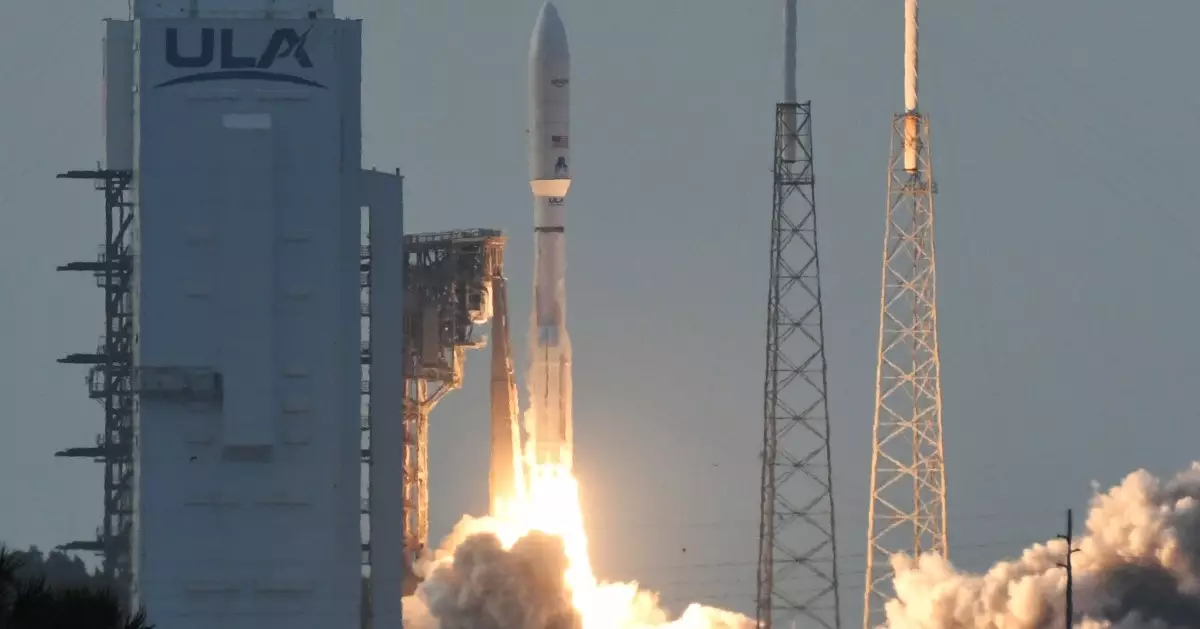The launch of Amazon’s Project Kuiper satellites marks a remarkable juncture in the ongoing evolution of satellite internet technology. The deployment of the first 27 satellites into low-Earth orbit is not merely a technical achievement; it signifies Amazon’s intent to disrupt the burgeoning satellite communications market dominated by SpaceX’s Starlink. With an ambitious vision to deploy 3,236 satellites in total, Project Kuiper is positioned as a potential game-changer in the realm of global internet accessibility. This initiative illustrates Amazon’s tenacity and deep-rooted commitment to technological innovation tailored to meet the increasingly complex demands of digital communication.
The Challenge Ahead: Competing with Established Giants
In an industry characterized by rapid innovation and fierce competition, Project Kuiper faces monumental challenges as it attempts to carve out a niche against an entrenched rival. Starlink’s vast operational fleet—boasting over 7,200 satellites—presents a formidable barrier to entry. Amazon’s ambition of launching a comparable constellation seems daunting, especially given the FCC’s deadline mandating at least 1,618 satellites in orbit by mid-2026. This timeline intensifies the pressure on Amazon to accelerate its deployment strategy, complicating what already seems to be an uphill battle.
SpaceX’s operational head start enables it to refine its technology and scale operations based on customer feedback and market demands. At the same time, Amazon’s entry is bolstered by its extensive resources and established infrastructure which may allow it to overcome initial hurdles. However, the path is fraught with uncertainties—such as regulatory approvals and the physical constraints of achieving successful launches, especially in a market where space is increasingly crowded with satellite constellations.
The Significance of Reliable Connectivity
Internet connectivity has grown to be a fundamental pillar for modern life, with implications that range from personal convenience to global commerce. Yet, billions remain underserved or entirely disconnected, particularly in remote and underdeveloped regions. Amazon’s Project Kuiper offers a glimmer of hope for bridging this digital divide by providing “high-speed, low-latency” internet access.
As Andy Jassy, Amazon’s CEO, succinctly encapsulated, this is a “first step in a much longer journey,” emphasizing the transformational potential of connectivity for both individuals and economies. The promise of affordable satellite internet could empower communities, enhance educational opportunities, and stimulate economic growth, creating a more interconnected world.
A Collaborative Approach to Future Missions
Amazon’s collaboration with the United Launch Alliance (ULA) reflects not only a strategic alignment of resources but also a recognition of the intricate nature of launching these satellites. ULA’s expertise in space logistics and operational efficiency is paramount; as ULA CEO Tory Bruno indicated, meticulous planning has enabled them to enhance their launch facilities in anticipation of future missions. This partnership represents a crucial element of Project Kuiper’s roadmap, spotlighting the need for innovation through collaboration.
Moreover, the burgeoning partnership between commercial entities and government agencies illustrates a promising trend in the aerospace sector. By uniting their strengths, they can navigate regulatory landscapes, ensure compliance, and ultimately work towards shared goals related to public welfare, such as disaster response and global connectivity initiatives.
The Future of Low-Earth Orbit
With space rapidly filling up with satellites, the conversation surrounding orbital debris management has come to the forefront. The increasing density of satellites in low-Earth orbit raises significant questions about the sustainability of space activities. As more companies like Amazon, Eutelsat, and China’s Spacesail strive to join the ranks, it becomes imperative to establish robust policies to manage space traffic and mitigate the risk of collisions.
Amazon must not only aim for operational efficiency but also act responsibly as stewards of the ethereal realm they are venturing into. The implications of neglecting these responsibilities could be detrimental, not just for Project Kuiper, but for the entire ecosystem of satellite communications.
As we witness the dawn of a new competitive landscape in satellite internet, the success of initiatives like Project Kuiper will hinge not just on technical prowess and launch capabilities, but also on strategic vision, responsibility, and resilience in navigating a complex and oftentimes unpredictable environment. The stakes are high, and the world watches closely as this ambitious venture takes flight.

